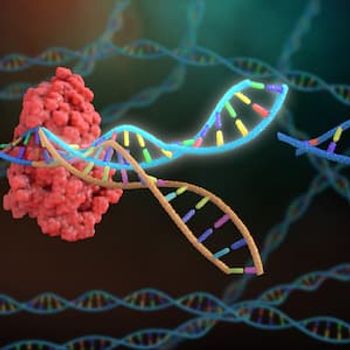
Trying New Approaches to AAV Therapy for Glioblastoma
Xandra Breakefield, PhD, an investigator of neurology at Mass General Research Institute, discussed research from her grad student, Lisa Nieland, presented at the ASGCT 2024 meeting.
Lisa Nieland, a PhD candidate from Lieden University Medical Center, is doing research on a novel approach for the treatment of glioblastoma that utilizes adeno-associated virus vector-based delivery of Staphylococcus aureus Cas9 (saCas9) guided by a single-guide RNA to target microRNA-21 (miR-21) coding sequences in the genome in vivo. She presented findings from her work at
At the conference, in addition to
CGTLive: Can you tell us about what your labs have been working on?
Xandra Breakefield, PhD: I started out in the field probably 40 years ago and was interested in doing gene therapy for neurologic diseases at the time. We didn't know what most of the genes were so I spent a lot with my career actually finding the diseased genes and then trying to work out strategies. My initial strategies were using a herpes virus-type vector called an amplicon vector. It seemed very promising so I spent a lot of time on it, but it frequently caused some toxicity in the brain.
In an office next to me was a neurosurgeon named Bob Martuza. He said, "Well, when I go in to operate on a tumor, I don't worry about a little toxicity around the tumor, and we actually have to take out some of the normal brain, too. Maybe your vectors would be useful in the context of glioma."
So we started working with him... And that's where the field of oncolytic virus vectors came from, which is still used in clinical trials. But because glioblastoma is little bit overwhelming honestly, it's such a difficult tumor, I became a little more interested in what are called tumor suppressor syndromes like tuberous sclerosis and neurofibromatosis. They're the individuals who inherit one mutant copy of an allele and then the other normal allele undergoes a mutation somatically; they will frequently get these benign tumors. So we spent a lot of work doing gene replacement in those 2 diseases with tuberous sclerosis at this point being the most positive.
But my lab still has a large number of people who work on glioblastoma and I give them a lot of credit. I have to say that when Lisa came in to me with this idea that she was going to knock out microRNA-21 (miR-21) in the glioblastoma tumor, I thought that was the most unlikely thing to be useful—because, first of all, the glioblastoma tumor is dividing and we know that you lose the AAV vectors when tumors divide—and then sometimes it takes the promoter days to turn on. So my idea was that the tumor cells would have already divided and gotten rid of the AAV before. But the one thing about glioblastomas is that they're very heterogeneous. So even though there's a lot of cells that are rapidly dividing, there's also a lot of cells that really aren't dividing, they're kind of just hanging out there. So I think it turns out to be a very good strategy. The thing I liked the best [about the research] was that it was really Lisa's idea as a graduate student. She had me as a mentor who was a little [iffy about it] but she persisted and she was successful. I think this is about as exciting as it could be for a graduate student and teaches us all that we may have our preconceived notions about what is going to work and what isn't, but you don't know in science until you try. So I'm really proud of her and her success...
This transcript has been edited for clarity.
REFERENCES
1. Glioblastoma Multiforme. Webpage. 2024. American Association of Neurological Surgeons. https://www.aans.org/en/Patients/Neurosurgical-Conditions-and-Treatments/Glioblastoma-Multiforme
2. Nieland L, Vrijmoet AB, Jetten IW, et al. All-in-One Adeno-Associated Virus Delivery for Therapeutic miR-21 Editing by saCas9 In Vivo. Presented at: ASGCT 27th Annual Meeting, May 7-10; Baltimore, Maryland. Abstract #113
Newsletter
Stay at the forefront of cutting-edge science with CGT—your direct line to expert insights, breakthrough data, and real-time coverage of the latest advancements in cell and gene therapy.










































